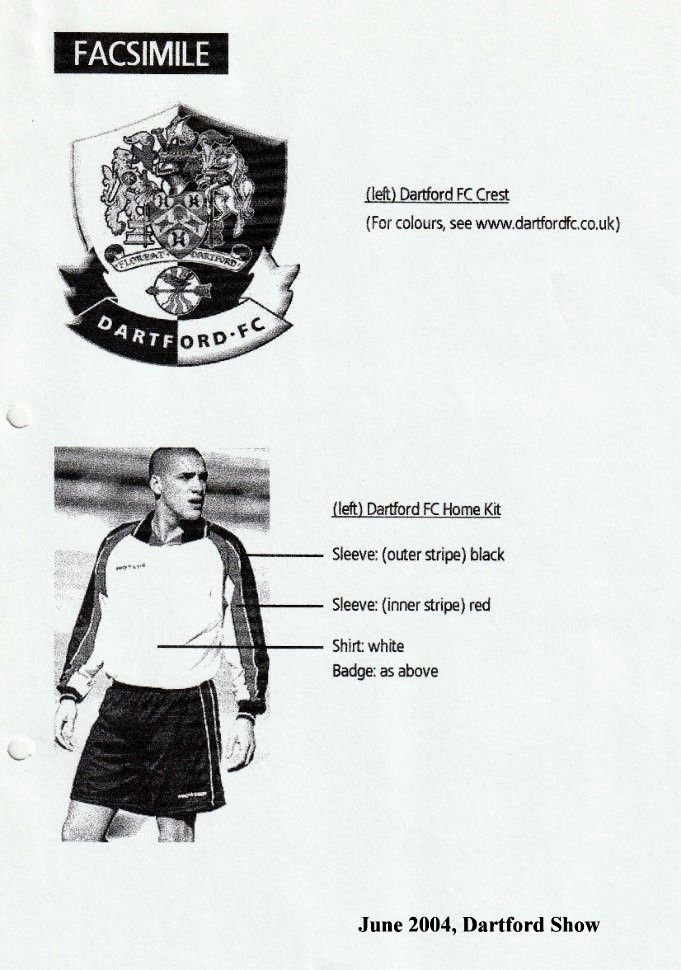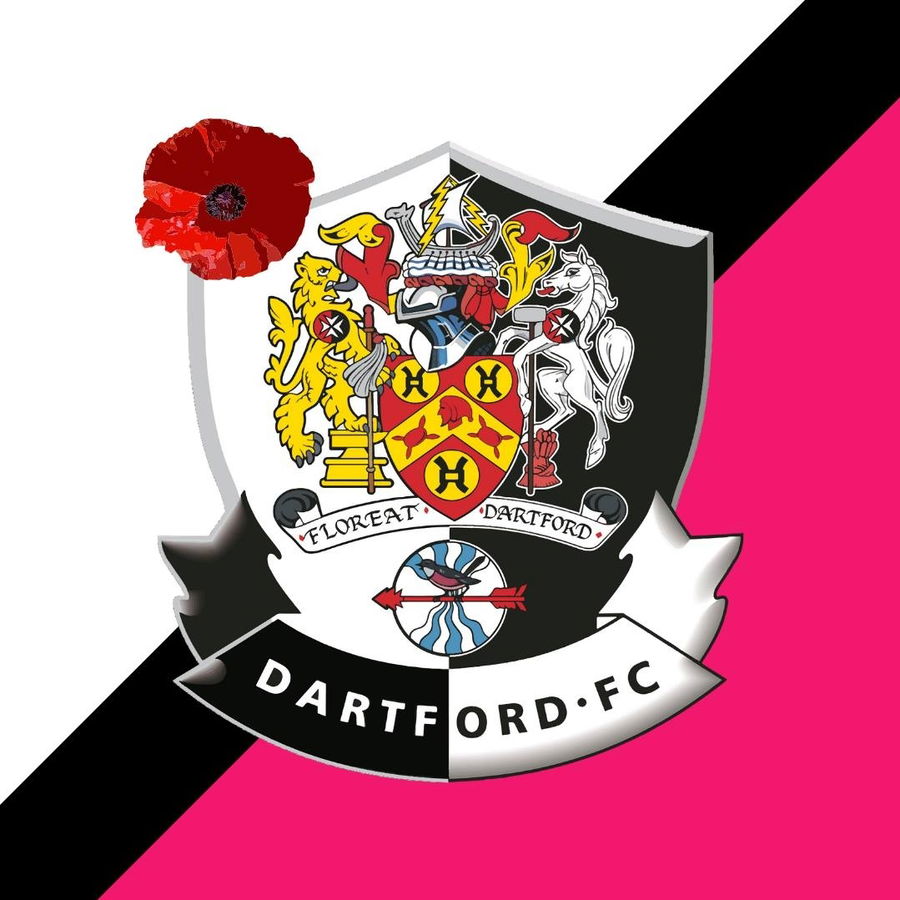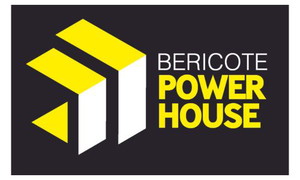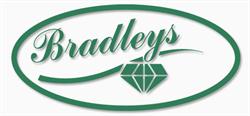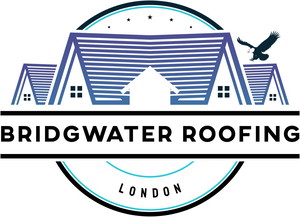Badge and Crest History
The DFC crest and badge has gone through numerous changes over the years. Tony Brown takes a deep delve.
The Evolution of the Dartford FC Crest
In the beginning: 1933
The Dartford Borough Coat of Arms was granted on 4th September, 1933, by the College of Arms for the setting up of the Dartford Borough in 1933.
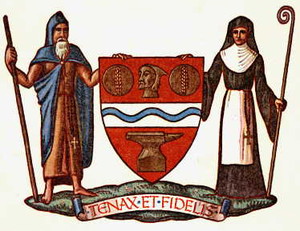
About The Dartford Borough Coat of Arms:
Origin and Meaning – Blazon (a formal description)
Arms: The waters of the Darent appropriately form the central feature of the design. These are aptly rendered in Heraldic convention by means of the stretch of silver traversed by a winding band of blue which reaches across the shield. Other charges mark some of the great industries for which the Borough is famous, Paper-making is represented in the playful spirit which is traditional in Heraldry by the Fool’s Cap (hence foolscap paper).
On either side are golden roundels, which are as near as Heraldry permits to get to the familiar tabloids of our chemical factories (ed: Burroughs & Wellcome). These are charged with ears of wheat, symbolising another of the former staple industries of the Borough (ed: Daren Bread). The golden anvil at the base of the shield is emblematical of the great engineering and metal working interests (ed: J&E Hall and others).
In the Supporters, who are the upholders and guardians of the shield, we are carried back to the ancient history and traditions of Dartford. On the one side stands the hermit, who serves to typify those recluses who, by their holy lives and untiring devotion to the cause of humanity, set a noble example for all time.
The Prioress, who shares with the Hermit the office of supporting and maintaining the shield, takes us back to an even earlier age, since it was in 1355 that the Augustinian Nunnery was established by King Edward III.
The English translation of the motto “Tenax et Fidelis” is “Steadfast and Faithful”
Post War Changes: 1946
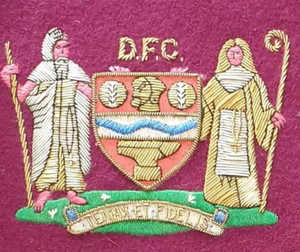
Reported in the Dartford Chronicle, 27th December 1946
Dartford Football Club Supporters’ Association have expressed satisfaction at the support given to the club by members of the Dartford Borough Council. The Council have indicated their interest in the town club by granting permission to reproduce the borough coat-of-arms, “Tenax et Fidelis,” on the club’s notepaper.
Coat of Arms on the Darts Shirt: 1953
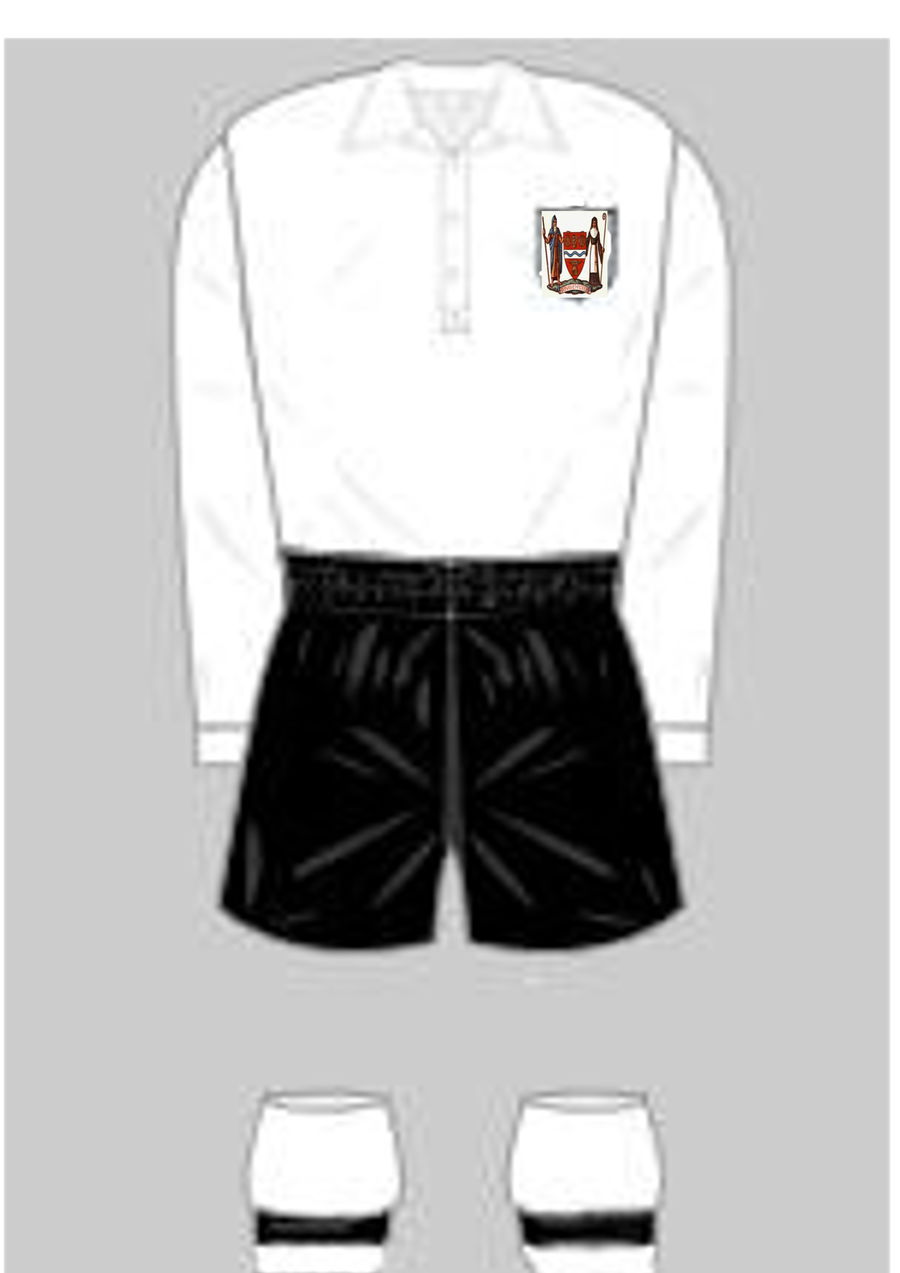
“THE TOWN CREST IS ALLOWED TO BE WORN ON THE PLAYER’S SHIRTS”
Reported in the Dartford Chronicle, 21st August 1953: “This season, the Club’s first choice colours will be White Shirts and black knickers, and permission has been given by the Dartford Borough Council for the Coat of Arms to be worn on the playing shirts.”
Correspondence was submitted from the Dartford Football Club Supporters’ Association asking the Dartford Borough Council for permission to reproduce the Borough Coat of Arms on their letter paper. At the General Purposes Committee, 1st January 1947, the application was granted.
The first match when the Coat of Arms was worn was on Saturday 14th November 1953 in the Southern League, home match with Barry Town. The Mayor, Councillor Lenderyou, and members of the Corporation were present.
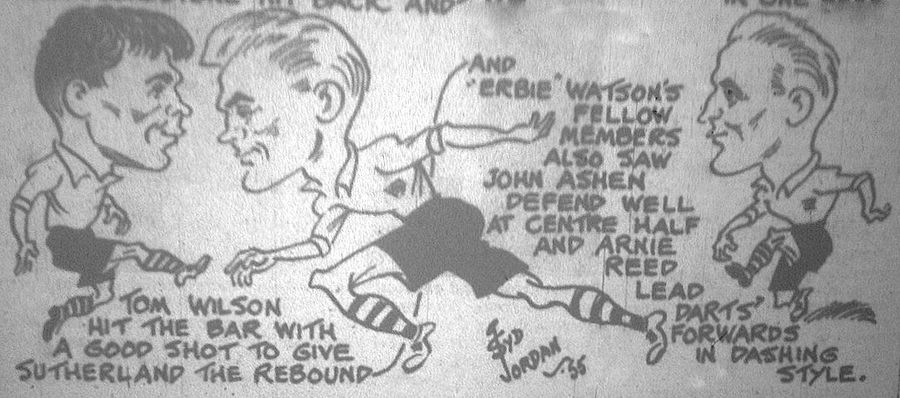
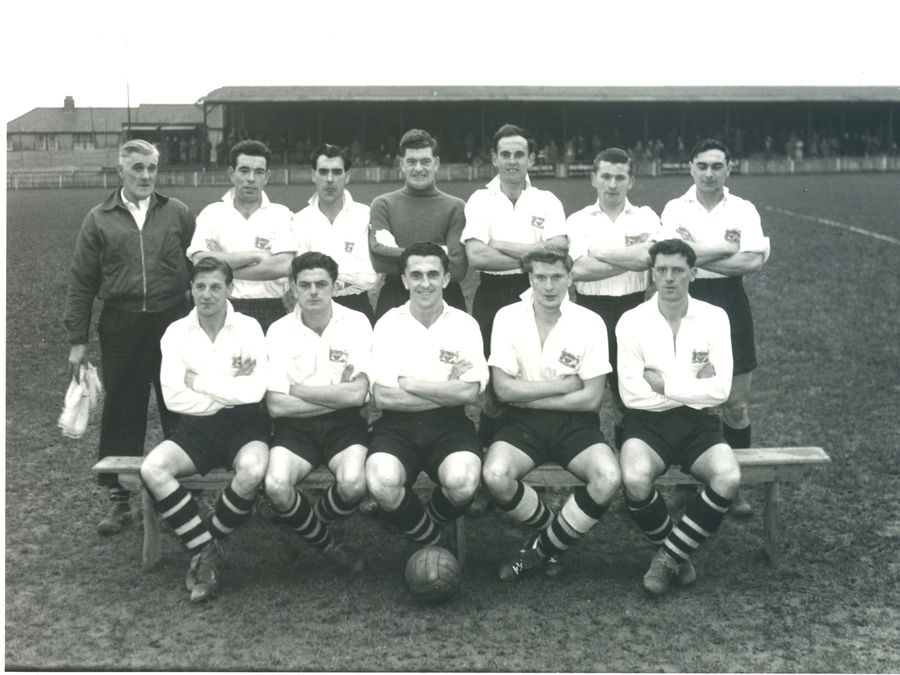
Although use of the (1933) crest on the club’s shirts was first granted in 1953, it wasn’t until season 1967-68 that the Coat of Arms was first used on a Darts’ matchday programme front cover. This was obviously more to do with the advancement in printing processes than anything else and the Coat or Arms was used on the following two season’s programmes. It was dropped from use from the 1970-71 season, but re-instated in the 1973-74 Wembley and championship winning season.
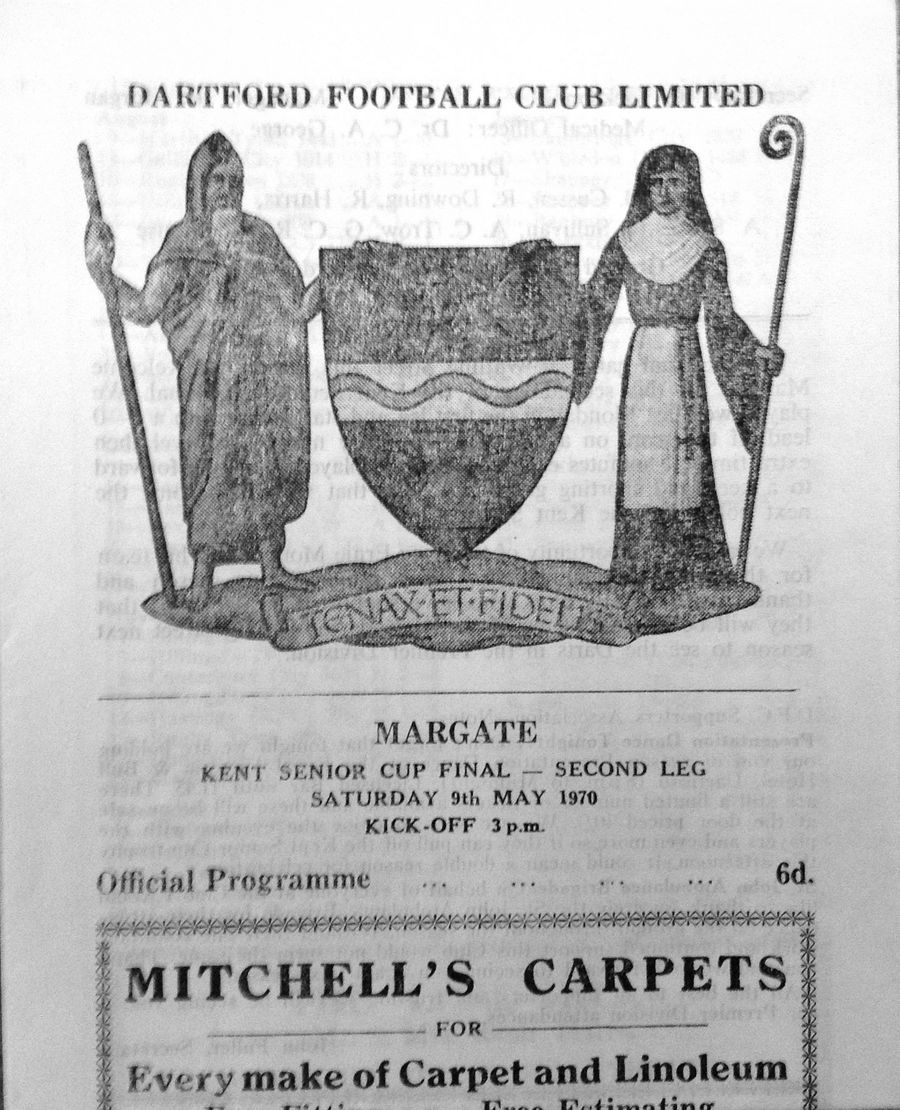
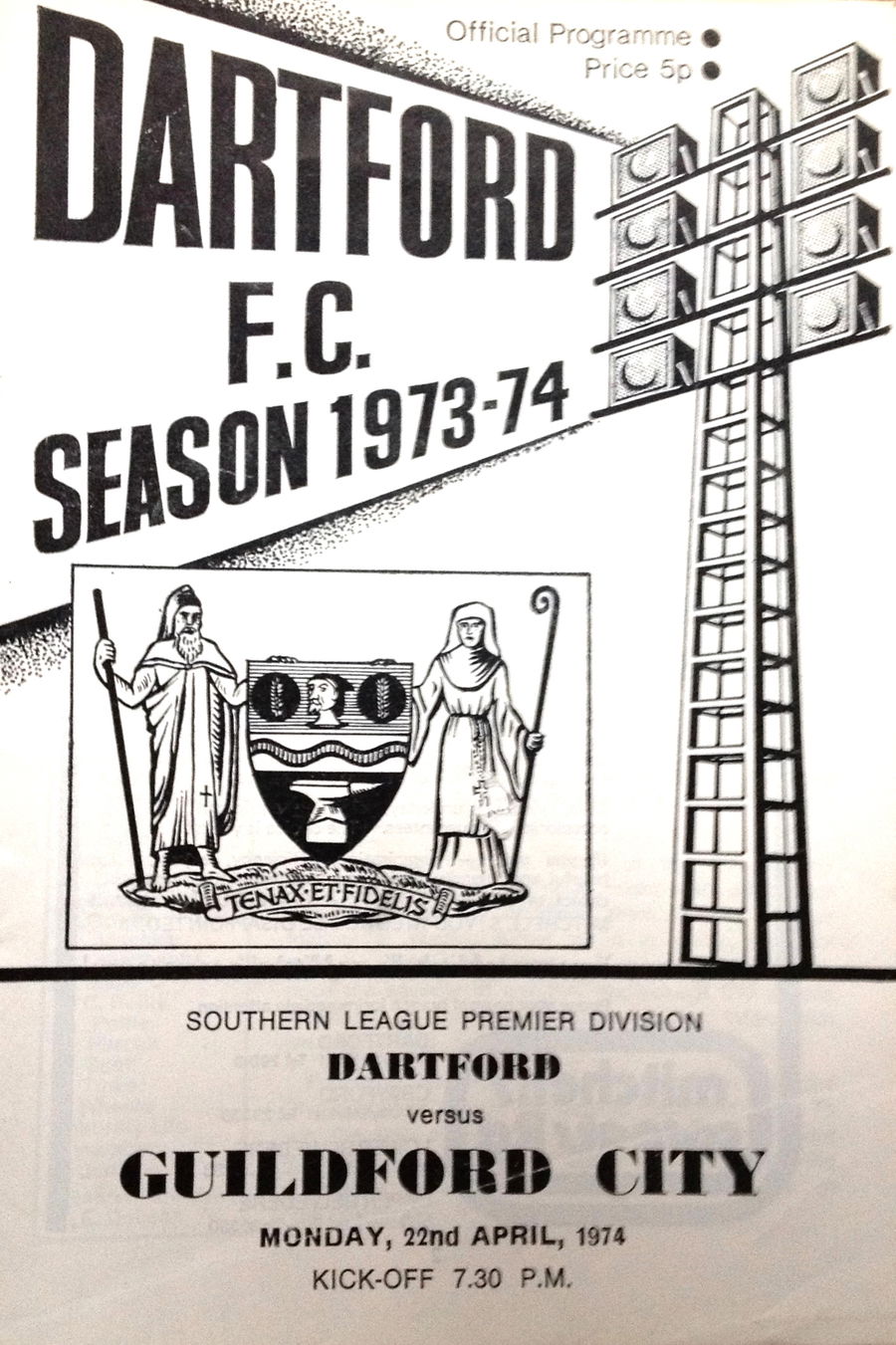
[Kentish Times photo Ref No. DD/7141 – Steve Irving/Tony Brown Digital collection]
All Change for the Council and Club: 1974-75
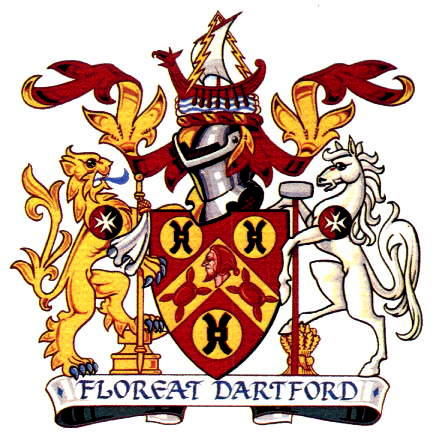
A re-organisation of local government in 1974 heralded a new town crest in 1975
Local Government changes in 1974 – The absorption of Dartford Rural and Swanscombe Urban councils into a new enlarged Dartford Borough Council – brought about a new Coat of Arms design.
In April 1974 the Dartford Chronicle wrote:
“NEW CREST FOR THE DARTS”
The new Dartford District Council are out to strengthen the ties between Dartford F.C. and the area – not only during the present Wembley flush of success, but for years to come. It is highly likely that when the district has its own coat of arms, the team will be invited to wear the crest on their kit. At the moment, the Council are inviting local schools with art departments to submit designs (the Kentish Times has offered a prize of £10 towards art books for the school submitting a successful design.). The design then has to be accepted by the College of Heralds. After that it may mark the association between DFC and the area. Although Darts have perhaps, always been most closely associated with the former borough, their Watling Street ground was in the Dartford Rural District. Under local government reorganisation, it is in the completed new Dartford District.
It was resolved at the meeting of Dartford District Council’s Policy and Resources Committee held on 3rd March, 1975 that the design which the Kings of Arms were prepared to grant to the Council be approved and adopted.
Origin and Meaning – Blazon (a formal description)
The chevron represents the bridge over the Darent, from which the name Dartford is derived. The chevron signifies a bridge between the three former councils, which are symbolised by the golden discs.
The jester’s head in a fool’s cap symbolises the paper industry, founded in Dartford in the 16th century. The two sacks represent the cement industry in Swanscombe. The mill rinds on the discs portray the milling of flour while the tabloid form of the discs themselves represent the pharmaceutical industry.
The ancient galley in the crest was one of those seen from Galley Hill sailing up the Thames in historical times. The type of ship was chosen as a reminder of the past Roman civilisation of the district. The seven oars represent Dartford and the six parishes in the district. The lightning symbolises the Littlebrook Power Station.
The supporters the lion of England and the horse of Kent. The lion is taken as a symbol for the long relations between the Kings and Dartford. King Henry III’s sister was married in the district to the Holy Roman Emperor, Edward III founded a priory in the district, which is further emphasised by the Prioress’s staff held by the lion. The lion stands on an anvil representing the engineering industries. Many of these industries occupy the lands of the former priory. Finally, Queen Elizabeth I often stayed in a Manor in Dartford.
The horse symbolises the relation with Kent. Between its front paws is a long hammer, the symbol of Wat Tylor, citizen of Dartford, who led the Kentish peasants in a revolt against unjust taxes. The horse stands on a garb of wheat, symbolising the agricultural character of a large part of the district.
Both supporters wear a shoulder badge with the cross of St. John, badge of the Knights Hospitaller, who had a commandery in Sutton-at-Hone. The motto Floreat Dartford is adopted from a school song written in the 16th century.

For several seasons, between 1974-75 and 1981-82, the match-day programmes bore the three darts and a football badge. From 1982-83 season the Dartford Coat of Arms was used with the words DARTFORD F.C. in a scroll across the top.
Around 1977, an addition of a title was made. A scroll encompassing “DARTFORD F.C.” was added across the top of the crest and this now formed the Darts’ official badge.
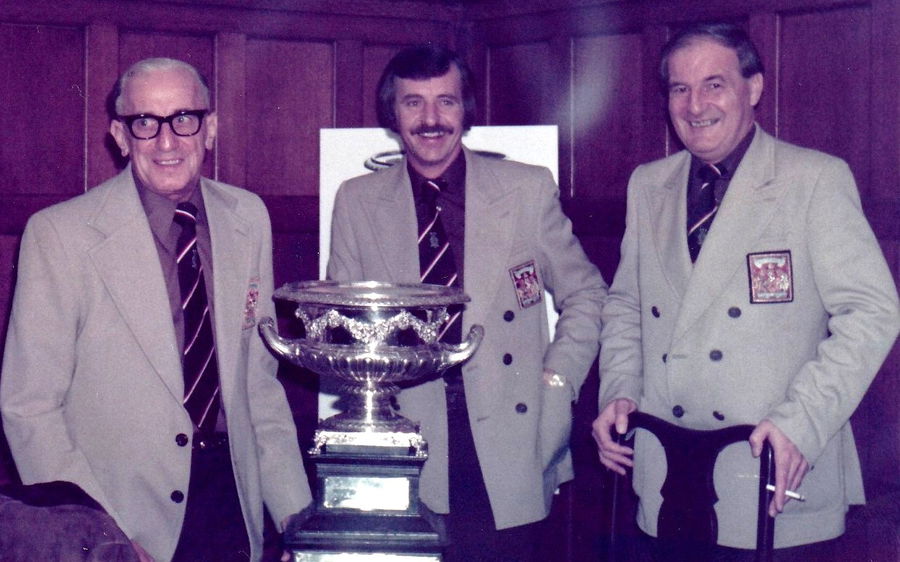
The first photograph we have of the team bearing the town’s new Coat-of-Arms is below, taken at the beginning of the 1977-78 season with the Southern League Cup which had been won in the previous season. It seems likely that the whole squad had their own jackets bearing this crest.
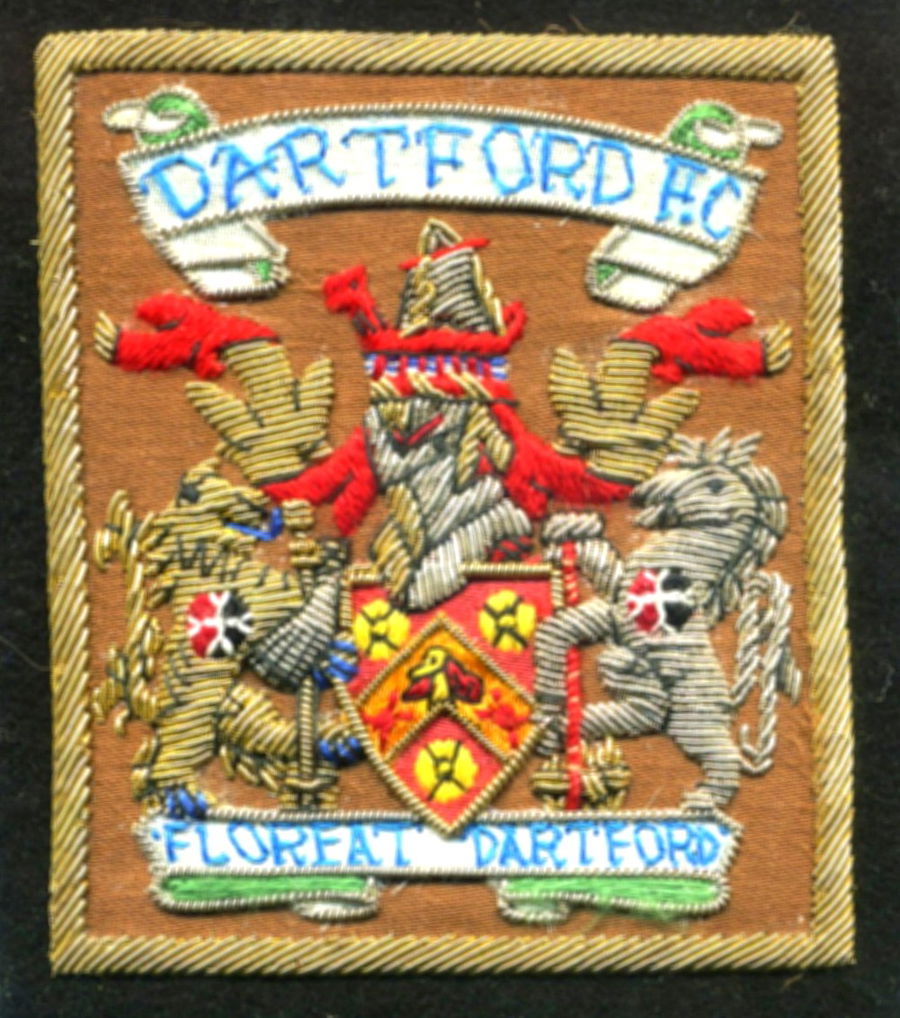
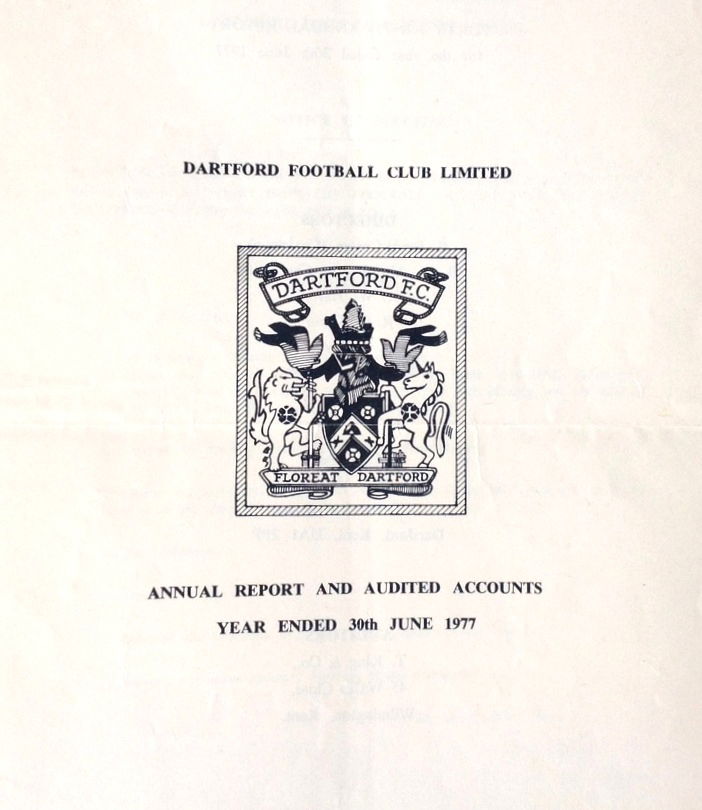
The earliest occurrence of the new Coat of Arms bearing the additional top scroll that appeared on printed matter found so far is on the Club’s Annual Report of 30th June 1977.
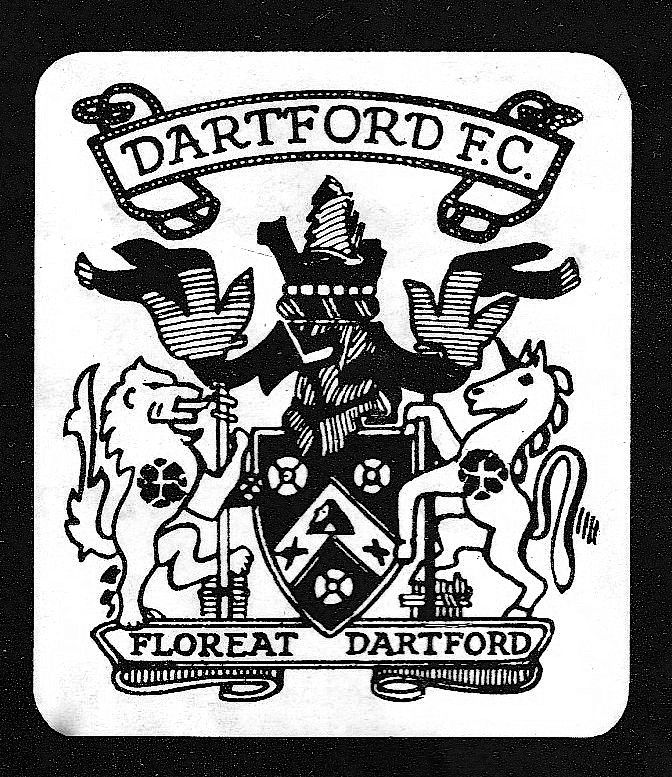
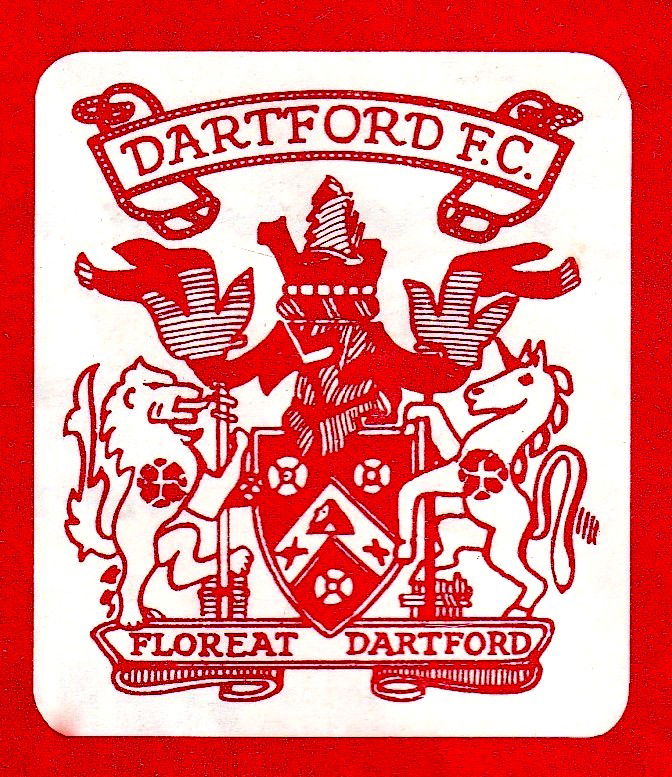
[Photo: Tony Brown Digital collection]
New Horizons for DFC: 1993
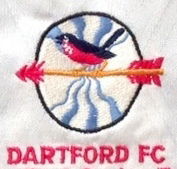
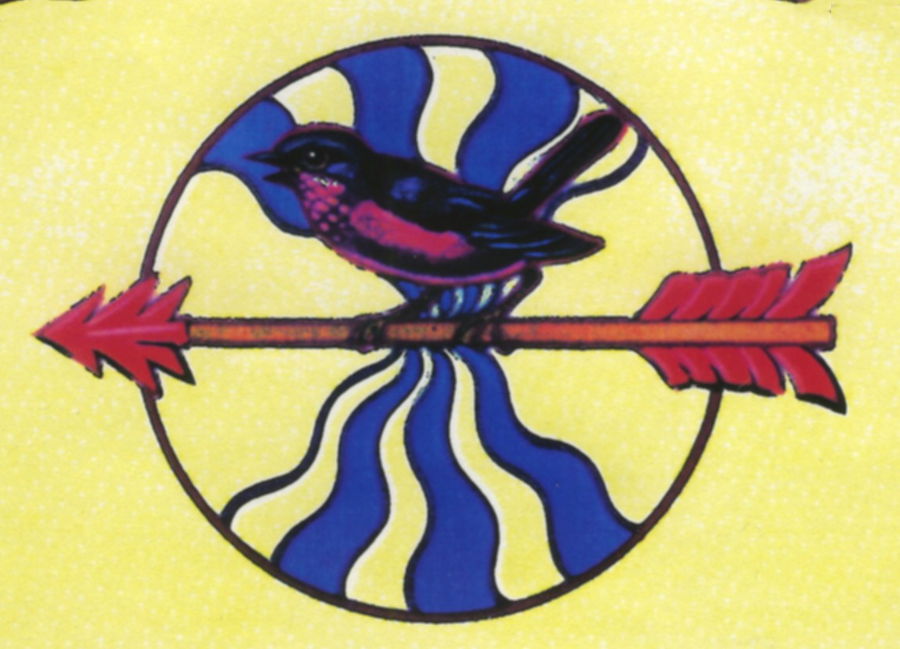
From season 1993-94, under the new Dartford F.C. 1992 Limited company, designs were considered for a new club badge. From season 1994-95 through to 2002-03 Dartford’s Badge, as worn on matchday shirts, was a circular white (or off-white) enamelled panel, containing a Dartford Warbler and red-feathered Dart facing to the left with the River Darent depicted in blue running underneath, south to north.
“DARTFORD FC” was added to the foot of the badge.
A New Design for a New Millennium: 2003
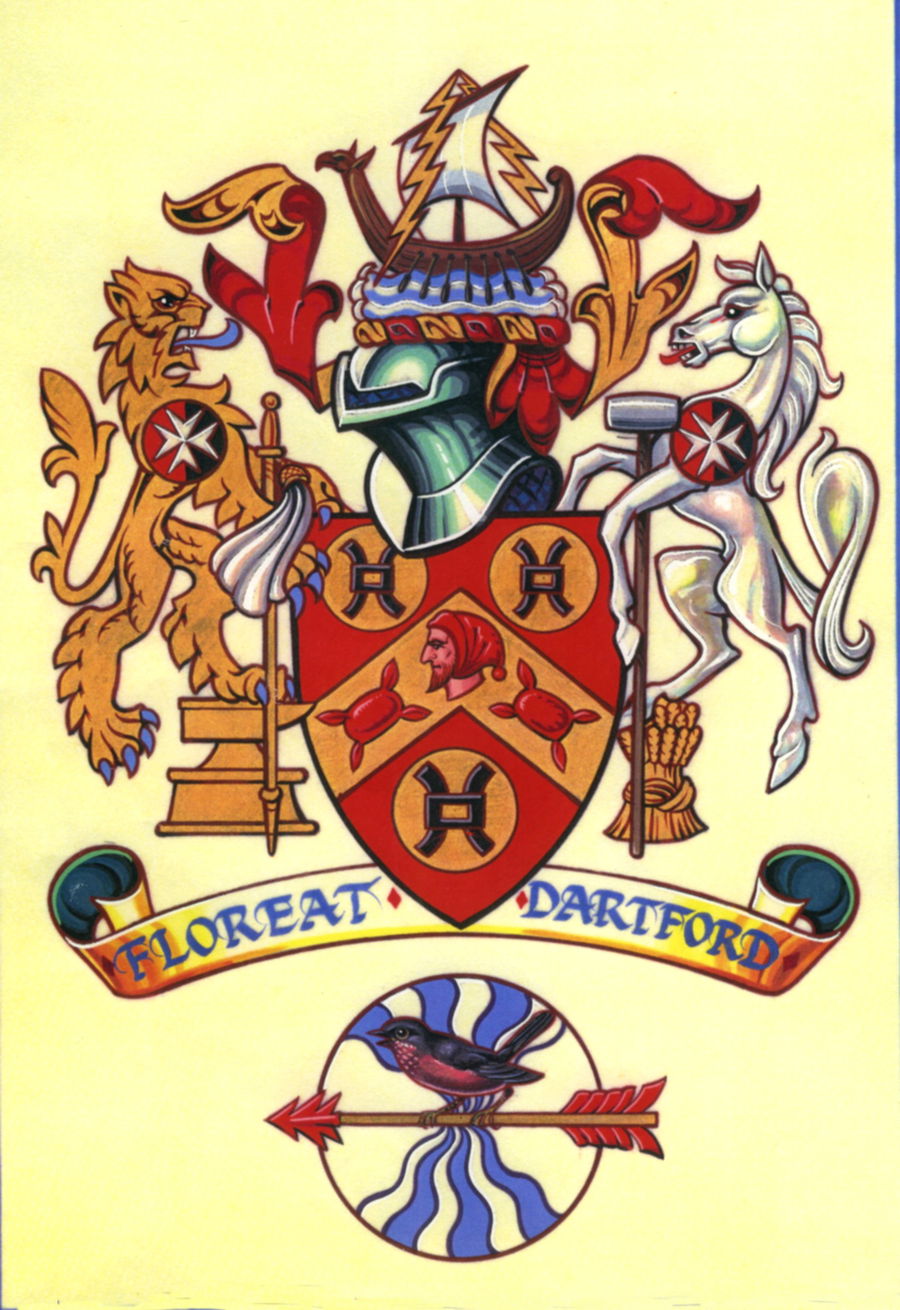
A Familiar Look: 2004
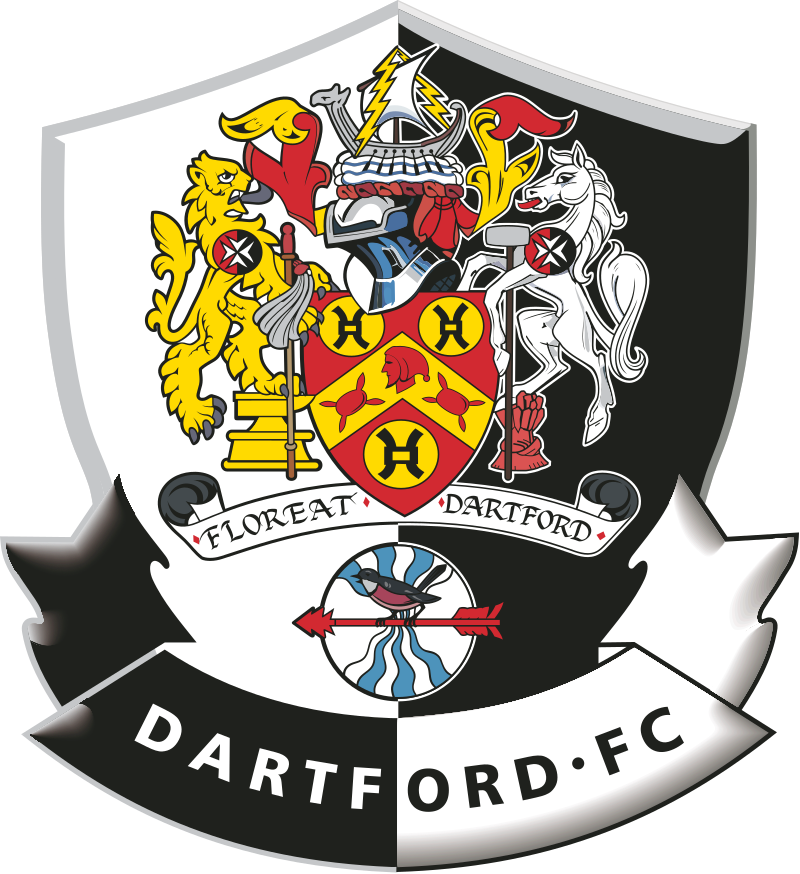
In 2004, The Dartford FC scroll was added to the foot of the crest.
